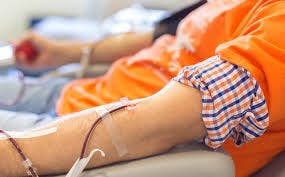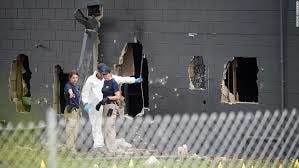
Fears over infections being passed on through donations from gay men led to an outright ban at the height of the Aids epidemic.
After 30 years, France is banning its rule that states men who have sex with men can’t give blood. The rule was implemented in the wake of the HIV/AIDS epidemic from the 1980s and 1990s.
Laurent Drelon went to the European Court of Human Rights (ECHR) to try to overturn rules that are seen as discriminatory among the LGBTQ+ community. Drelon decided to go to the court after being told he can’t give blood several times since 2004.
Gay men were banned from giving blood in France in 1983 over the fear of spreading HIV, which would lead to AIDS. Originally, men who had sex with men couldn’t give blood whatsoever, but in 2016, the rule was changed to say gay men couldn’t give blood if they’ve had intercourse within 12 months.
In Drelon’s case, he argued that the rule is discriminatory on the basis of sexuality and it also forces him to reveal his sexuality, which is a violation of privacy.
Patrice Spinosi, Drelon’s lawyer, said the rule for forcing abstinence in order to give blood "is based solely on a person's sex and sexual orientation... and violates the right to privacy" as set out in the European Convention on Human Rights.
In the wake of the Pulse shooting in Orlando, Florida on June 12, 2016, there was a common (ironic) issue: many gay and bisexual men could not donate blood to help the victims.

The aftermath of the gay nightclub Pulse shooting that happened on June 12, 2016 in Orlando, FL. Gay and bisexual men were not able to donate blood due to the FDA's ban.
Up until Dec. 2015, the Food and Drug Administration (FDA) concluded that a man who had ever had sex with another man was unfit to give blood. Then, the rule was changed, just like the one in France, to say that if a man has had sex with another man within 12 months he is unfit to give blood.
When the ban was originally put into place, HIV tests were less sensitive and couldn’t detect the virus until six to 12 weeks after infection. However, today’s technology detects HIV within nine to 14 days of exposure with near-perfect sensitivity.
Additionally, advances in research have provided extremely reliable methods for determining if someone is at risk of infection based on their sexual behaviors, not sexual orientation. The chance of getting HIV from a blood transfusion in the United States today is 1 in 2 million, according to the National Heart, Lung and Blood Institute (NHLBI).
The rule that gay/bisexual men can’t give blood is based on fear - not science. Heterosexual donors who have multiple concurrent partners have much more of a chance spreading some kind of disease than a gay or bisexual man who’s been in a relationship with one person for a good amount of time.
Under the current system a heterosexual man with an active chlamydia or herpes infection is not prohibited from donating blood, even if those infections suggest recent high-risk sexual contact.


Overall, the rule suggests that all men who engage in sexual intercourse with other men automatically have HIV - which is a very overused stereotype.
In a country where nearly one-fourth of newer HIV diagnoses are coming from heterosexual transmission, this double standard is ridiculous unless the goal in the United States is discrimination and not safety.









